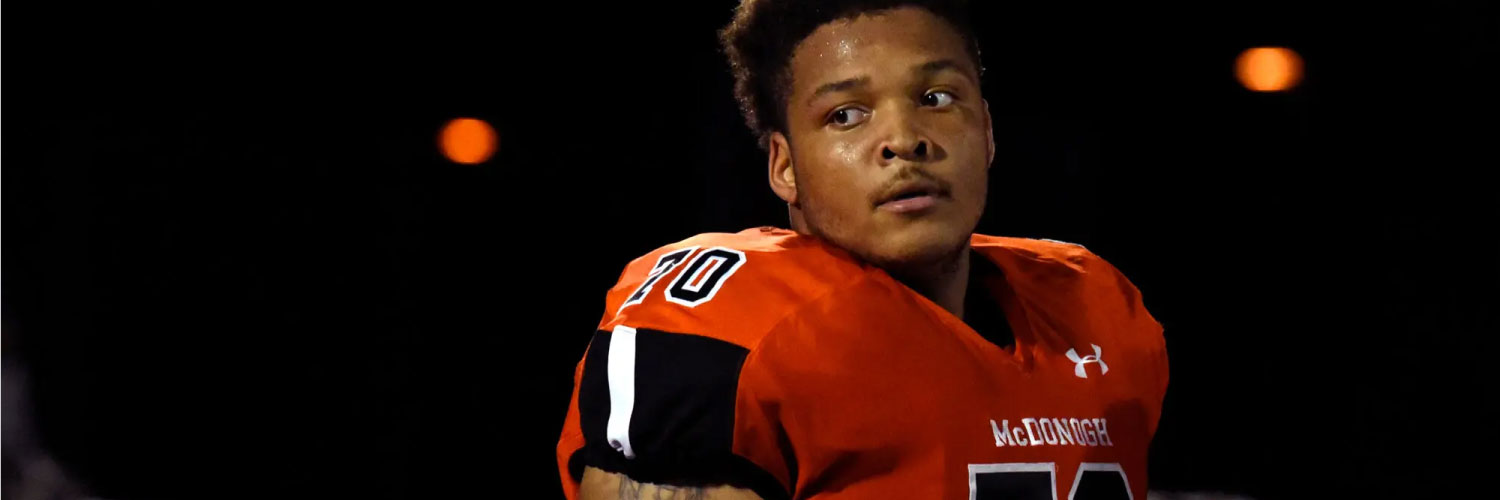
Contact Us
Join us on our mission to prevent heat related illness and death. Talk to someone on our team about adding ColdVest to your heat safety program.
One Hour Thirty Seven Minutes: My Son Jordan and the Truth About Heat-Related Injuries

This is an important and heartbreaking story—and one not unique to athletes. Anyone who works or plays in extreme heat is at risk. Heat stroke doesn’t discriminate by profession, age, or location. It can happen in schools, on job sites, indoors or out. And while it is 100% preventable, prevention only works when people are trained, equipped, and ready to act. Jordan McNair’s story reminds us just how devastating the cost of inaction can be—and why preparedness isn’t optional.
It Wasn’t Supposed to Happen Like This
When we walked into the ER that day in June 2018—just one day after dropping our son Jordan off for his first college football practice—we had no idea our lives were about to change forever. My first two questions were simple, but they were the beginning of a lifetime of painful revelations: “What happened?” “Has this ever happened to you before—on your watch?” Up until that moment, I didn’t know what an athletic trainer even was. Like many parents, I believed coaches were medically trained professionals. I thought if someone got overheated, they’d get some water, some shade, and then get right back into practice. I didn’t know that a heat-related injury could be deadly.
My Last Conversation With Jordan
The night before it all happened, our last conversation was short but full of love and pride. “Hey, I know practice starts tomorrow—have a good week. Call me later.” The next conversation wasn’t a conversation at all. It was in the emergency room, looking at my son hooked up to machines, surrounded by a medical team trying to save him. “Son, if you can hear us, blink your eyes.” “Son, if you can hear us, squeeze our fingers.” He was lying in a bear suit—a cooling device used to bring down body temperature. At that point, his internal temperature had reached 106 degrees. One hour and thirty-seven minutes had passed since the symptoms began.
The Window
I didn’t know that when a person’s core body temperature rises above 104 degrees, the body starts to shut down. It’s like being trapped in a microwave. Organs begin to cook. There’s a 20 to 30-minute window—a small sliver of time—to cool the person down before irreversible damage is done. That can be done with a cold water immersion tub, or ice packs placed on the head, underarms, and groin. If done in time, the person survives. They recover. But Jordan’s window closed.
What We Didn’t Know Cost Everything
The following morning, a transplant surgeon sat across from us and said something no parent should ever hear: “Jordan’s liver is 85% necrotic. If we don’t do a transplant, he’ll be gone in 12 hours.” We moved forward with the transplant. We had hope. But ultimately, too much damage had been done. Less than 2 weeks later, Jordan passed on June 13,2018.
From Grief to Action
I asked myself the same question over and over again: If I didn’t know how deadly a heat-related injury could be, how many other parents in America don’t know? I did what any parent who loves their child to life would do. I started a foundation in Jordan’s honor—to ensure this never happens to another family. And as we enter our 7th year, our mission has never wavered: to educate, advocate, and prevent heat-related injuries through awareness and community outreach.
The Basics Are Simple
1. **Heat-related injuries aren’t the enemy—**mismanagement is.
2. Prevention only works when it’s practiced consistently, intentionally, and without shortcuts.
3. Always make sure there is safety equipment on the field. A first aid tent, cold water, ice, and an AED machine should always be on or near the field and easily accessible.
4. Remember: coaches aren’t medical professionals. Athletic trainers are. Know who’s in charge of health and safety at your child’s practices.
5. In layman’s terms, an Emergency Action Plan (EAP) is a fire drill. The potential for a “fire” exists every time an athlete steps onto a sports field. Make sure the program your child plays for has a clearly defined EAP—and that it’s practiced consistently.
6. Remember the words of the famous poet Vanilla Ice: “ICE ICE Baby.” The worst thing ice can do is melt. The best thing it can do is save a life.
For more information on how to protect student-athletes and save lives from this 100% preventable injury, visit us at The Jordan McNair Foundation website. Because the more educated we are, the safer all of our athletes will be.
Thanks, Marty McNair
Founder, The Jordan McNair Foundation
Author Bio: Marty McNair is the founder of The Jordan McNair Foundation, an organization dedicated to the education, prevention, and awareness of heat-related injuries in student-athletes. The foundation was established in honor of his son, Jordan McNair, who passed away in 2018 following a heat-related incident during football practice. Learn more at thejordanmcnairfoundation.org.
Image of Jordan: Barbara Haddock Taylor/The Baltimore Sun, via Associated Press










.webp)




